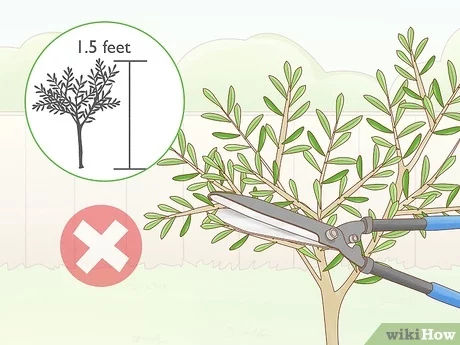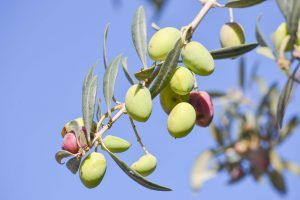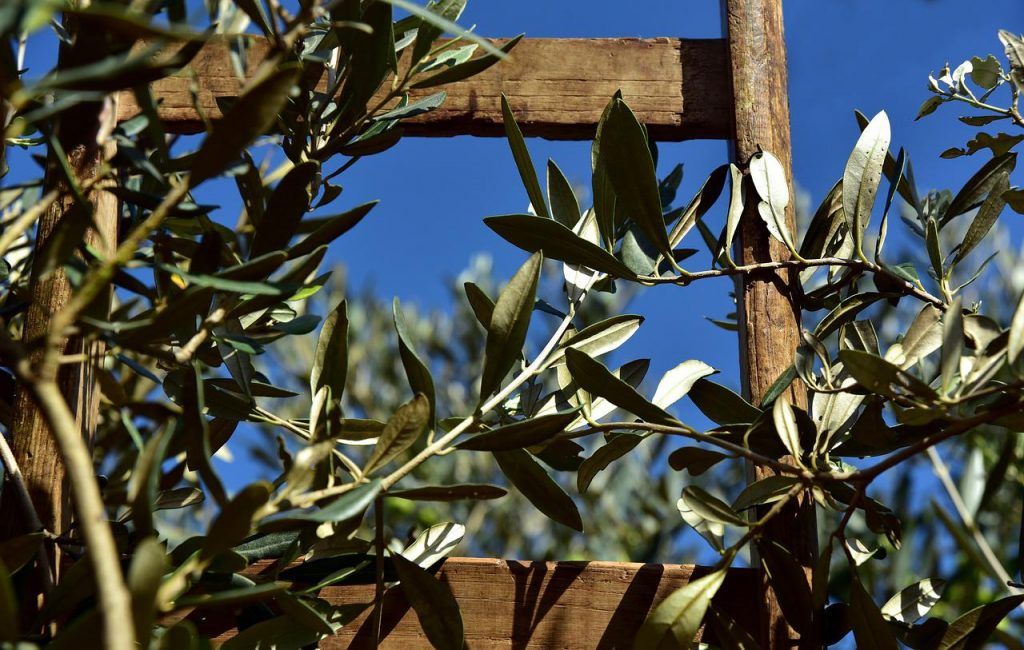When, How (And Why) To Prune an Olive Tree – Sow100

Whether it is because you have an ornamental olive tree or a large extension of these wonderful trees, you may be interested in learning about their pruning and care.
The olive tree is one of the most important and high production trees that we have in Spain.
Although it is preferable to have it in Mediterranean climates, it has a very high capacity for adaptation, varying from cold climates to the hottest.
When you have one or several crops, it is necessary to know that pruning is part of the basic care so that it is very healthy.And today here we will give you all the details so that you can execute this procedure very well even if you are a beginner.

Why prune olive trees?
Olive trees need to be pruned to ensure that they are totally healthy for the duration of their life.However, in most cases this purpose is included within the objective of pruning for production.
The idea is to carry out planned pruning that helps the tree to generate a higher number of fruits and thus prevents it from completing its normal cycle and stopping.It is a practice that applies not only to olive trees but to almost all plant species.
When pruning is well applied, it will also help the tree stay young for longer.
Is it really necessary to prune an olive tree?
Although pruning can often be a good idea, olive trees are relatively slow growing and should not need much pruning in most cases.
However, it is important to note that it is good practice (with an ornamental olive tree) to remove any dead, damaged or diseased material as part of general care and maintenance.
If you intend to grow an olive tree for its fruits, the pruning considerations are somewhat different.
And even when the fruit sets successfully, you will have to pick them before the first frosts and cure them before using them.
Curing is essential if you want the olives to taste the same as those you can buy in stores.
So, in summary, you may want to prune olive trees:
- For simple maintenance.
- To encourage fruiting and promote the production of new fruits.
- To keep the size and shape of the tree in check.
- However, although olive trees can respond well to pruning, it is important not to overdo it.
If pruning is excessive, the tree can produce numerous water shoots (which do not bear fruit).
This is not ideal when it comes to producing fruit, of course.
It can also negatively affect the overall appearance of your olive tree.
Olive trees generally need to be pruned lightly to retain a more natural look.
When is it better to carry out the pruning of olive trees?
First of all, when pruning an olive tree (for whatever purpose and objective) it is important to choose the right time for the work.
Typically, you’ll want to prune an olive tree between late spring and late summer.
It is important not to prune your olive tree during the winter as this can make the tree more vulnerable to disease infection.
- Always prune during the warmest part of the year to reduce the chances of diseases taking hold.
- Unfortunately, olive trees can be quite prone to a number of diseases, especially in cooler weather .
- Pruning incorrectly and at the wrong time can make it more likely that some will take root.
- Some only slightly affect the appearance of the tree, but some diseases can kill your olive tree.
Olive tree pruning should be done when the fruit production process has slowed down. In most cases, this period corresponds to the arrival of winter and it is possible to run it if the surrounding temperatures allow it.
What tools should we use to prune olive trees?
Being a tree, the pruning of the olive tree will require the use of different tools, especially to work the branches according to their thickness. It is normal to have normal pruning shears at hand to remove the most tender parts that do not require the use of much force.
The saw is another necessary element to advance with branches that are of medium thickness and that are at an appropriate height.When you work the highest parts of the crown, you will need height scissors and a ladder if necessary.
If it is necessary to prune much thicker branches that would generate excessive work when using a handsaw, the chainsaw will be a great ally.It is important to note that each of these tools must be well disinfected before proceeding with the tasks.
Even if you are going to move from one tree to another, even if it is of the same species, it must be disinfected to reduce the risk of suffering from diseases.Finally, don’t forget that personal safety is very important, so wear gloves, goggles and, if possible, even a helmet .
What should we take into account when pruning olive trees?
The pruning of the olive trees must be carried out when there are no longer any olives on the structure of the same, you have to make sure to clean it well. It is necessary to carry out a primary review of the structure, at least one day before and when there is enough sunlight to plan well how the pruning will be.
This action will help you do a better job and spend less time because you will already know the exact points on which to focus.
How to prune olive trees without damaging the tree?
 The pruning of olive trees will go through different phases depending on the objective that you hope to achieve with its application.
The pruning of olive trees will go through different phases depending on the objective that you hope to achieve with its application.
A first pruning is training, which is applied to trees when they are in clear growth and whose objective is to help structure it.
It is an important pruning, but it must be carried out very delicately to avoid a number of cuts greater than necessary.
When young trees are subjected to very heavy pruning, the waiting time for production to start will undoubtedly be longer.Now, the pruning that has to do with the vegetative and productive stimulation of the olive tree will follow the following steps:
- Eliminate the parts that are in poor condition. This must be a step that is always fulfilled to avoid affecting other areas of the tree.
- Define what will be the main trunk of the tree and proceed to cut any other secondary that has formed and is preventing the correct flow of air and sunlight to the internal areas of the olive tree.
- Check all branches that have been discovered in an unfavorable position . That is, that they present some deformity or that they are colliding with each other (in this case it may not be necessary to eliminate both).
- Trim some branches that are too long to make them all about the same length .
Performing an annual pruning and with good planning to olive trees will help maximize their productive potential and their life in general.
Olive tree pruning step by step
Step 1. Cleaning and thinning of the tree
First, do what we call a «cleanup» or thinning of the tree. Remove all suckers around the base of the trunk and any shoots that have sprouted from the main arms blocking the center of the canopy. clean them.
Step 2. Distinguish the main arms
Now the difficult part begins, in which more skill and judgment is required.
Your goal is to leave a single shoot up and out at the top of each of the main arms. That is, three or four in the most slender trees. It removes more even on those trees that are most neglected and that you are trying to bring into shape. All other verticals must be removed. The problem is distinguishing the verticals.
Judgment and experience are required.
Step 3. Remove weakened or dead branches
Once the uprights have been removed, which will be mostly around the top of the tree, you need to thin out any overhanging branches that have weakened.
These will be toward the interior of the tree and are often best approached from the interior of the tree skirt. The growth of this fruitful wood is the reflection of upward growth. While upward growth zigzags from outside to top, fruiting wood zigzags downward.
If you cut the last zig or zag, you will allow the new side shoots from above to replace the depleted wood. Again, the criterion plays an important role. The dead wood inside is obviously pruned. Vigorous laterals on the outside will produce abundant fruit. In between you have to decide which ones should be eliminated for being weak and which ones deserve to be left for another season.
Step 4. Observe how the tree has turned out and its density
Lastly, stand back from the pruned tree and look at it as a whole to judge the overall density. The ideal tree should consist of three or four main arms emerging from a trunk about 80 to 120 cm above the ground.
From these main branches come the lateral branches that support the harvest. At the bottom of the tree, the laterals are old. They were produced by the young tree. They have grown from the arms in a series of zigzags, each year cutting off the weakest, lowest overhanging branches.
They form the base of the cone (hence the name polyconic) around each arm and combine to form a skirt around the entire tree. If the laterals are long and skinny, they are chasing the light, indicating that you haven’t cleared the center enough for light to penetrate inside, or that the overall foliage density is too great. More severe pruning is needed to open up the tree.
As you go up each main structural arm, the younger laterals are shorter. They are unlikely to shade each other in this early phase, but density is still important as they collectively shade the growth below. It is important to keep the upper parts of the tree open to allow the lower parts to remain productive, as they are much easier to pick.

How do we know when we’re done?
Folklore says to prune the olive tree until it is open enough for a bird to fly through it. Hiding in the olive grove and watching the birds is not a very practical means of judging the general density of foliage.
Science tells you that you should prune until you have a leaf area index of three or four.
The leaf area index is the ratio of the area of the tree’s leaves to the area of the ground covered by the tree. Counting the leaves would take even more time than studying the flight paths of birds.
Neither indicator provides an easy rule of thumb for the inexperienced pruner. My advice is to look at other trees in your district and be sensitive to the symptoms of lack of pruning. It is highly unlikely that you will dare to over-prune, so under-pruning is the usual beginner’s fault.
maintenance pruning
Normally, if an olive tree is growing on the ground, light maintenance pruning is all that is needed.
It is enough to remove the branches that are damaged by rubbing against each other, and those that have been damaged during the winter months in late spring or early summer.
At the same time, you can also prune some branches in the center of the canopy to let more light into the new shoots, and remove a side branch or two to maintain a nice shape.
But don’t overdo it: less is more when it comes to the maintenance pruning of an olive tree that is grown for ornamental reasons and not for its fruit.
Pruning for olives
When pruning an olive tree for olives (or oil ultimately) one of the most important things to remember is that olives only fruit on the tips of the previous year’s growth.
Pruning too zealously can prevent fruit set.
However, not pruning at all can lead, over time, to a tree with too much old wood, which can also restrict new growth and prevent light from reaching and ripening the fruit that forms on last year’s branches.
Therefore, it is a good idea to prune sections of old wood each year to allow some newer or fruitful growth to form.
It is also recommended to reduce the fruits that form to no more than 3-4 per 30 cm of branch.
This should help ensure that the olives mature successfully and do not fall off the tree prematurely before harvest time.
Pruning to control the size of the olive tree
Pruning to restrict size is not usually a concern when these slow-growing trees are grown in the ground.
But when grown in containers, some additional pruning may be necessary so they don’t outgrow their pot.
In addition to general maintenance pruning in late spring or early summer, a container grown olive tree may need additional summer pruning to restrict its size.
If you are not worried about fruit production, you can reduce the size of your tree crown by up to 1/3 to keep its size under control.
When container olive trees grow to 1.5m tall, it is also often a good idea to prune to preserve or create a pleasing shape.
Choose some of the strongest and best placed branches and keep them, but get rid of other shoots.
Also keep in mind that you can take the pruned branches in summer and use them as semi-ripe cuttings to propagate new olive trees from the mother plant.
What do we do with the young trees?
Most farmers buy one or two year old trees to establish their grove. They are about a meter tall, sold in a small pot and cost about 5 euros each.
These trees will have to be shaped. It is possible to buy larger trees. A few more years of growth can be expensive. The price approximately doubles for each additional year and with each transplant. These older trees are shaped.
Young tree pruning follows two contradictory principles that must be balanced. The first is to give the tree the shape that, barring frost damage, will be its structure for life.
The other is to allow the young tree to grow and accumulate energy reserves. An old tree can be cut down and felled with impunity and will recover with enormous vigor thanks to the energy reserves of the roots and trunk.
The young tree will not. Trying to get the perfect shape through excessive pruning will weaken the young tree and stunt its growth for several years. Getting the balance right is part of the realm of art and talent that distinguishes the good pruner from the poor.
Bibliography and references
-
[PDF] Different frequencies of pruning in traditional olive groves, DP Mohedano – Rural life, 2005 – mapa.gob.es
-
Olive pruning and grafting, A Iniguez, L Sánchez, M Sierra – Notebooks of Technology…, 1999 – 34.240.160.189
-
[PDF] Olive pruning in intensive olive growing, V Vega, JC Hidalgo, J Hidalgo – Agriculture, 2008 – mapa.gob.es
-
Olive cultivation, S Paz – 2020 – redivia.gva.es
-
[PDF] Olive tree pruning : its relationship with production states, AGÓ Rodríguez – Rural life, 2000 – mapa.gob.es
-
The formation pruning of the olive tree. S Paz – Agrícola Vergel, 2001 – redivia.gva.es
-
[PDF] The new seedlings of the olive tree, JM Caballero, C del Río – mapa.gob.es







![Photo of How to Plant a Hazelnut and Harvest Your Own Hazelnuts: [Complete Guide]](https://www.complete-gardening.com/wp-content/uploads/2021/06/sembrar-avellanas-390x220.jpg)

![Photo of Prune Dahlias: [Importance, Time, Tools, Considerations and Steps]](https://www.complete-gardening.com/wp-content/uploads/2022/08/prune-dahlias-importance-time-tools-considerations-and-steps-390x220.jpg)
![Photo of How to Plant Peanuts in your Garden: [Complete Guide + Images]](https://www.complete-gardening.com/wp-content/uploads/2022/08/how-to-plant-peanuts-in-your-garden-complete-guide-images-390x220.jpg)